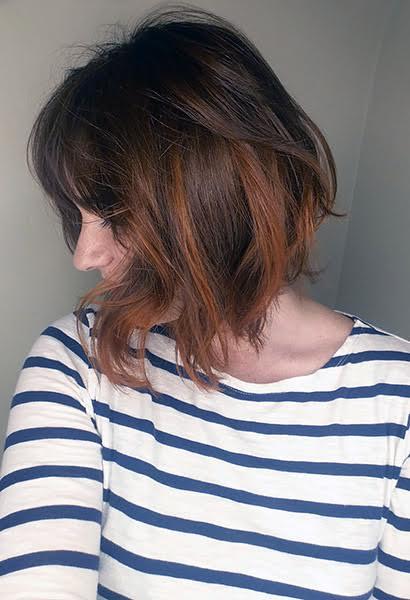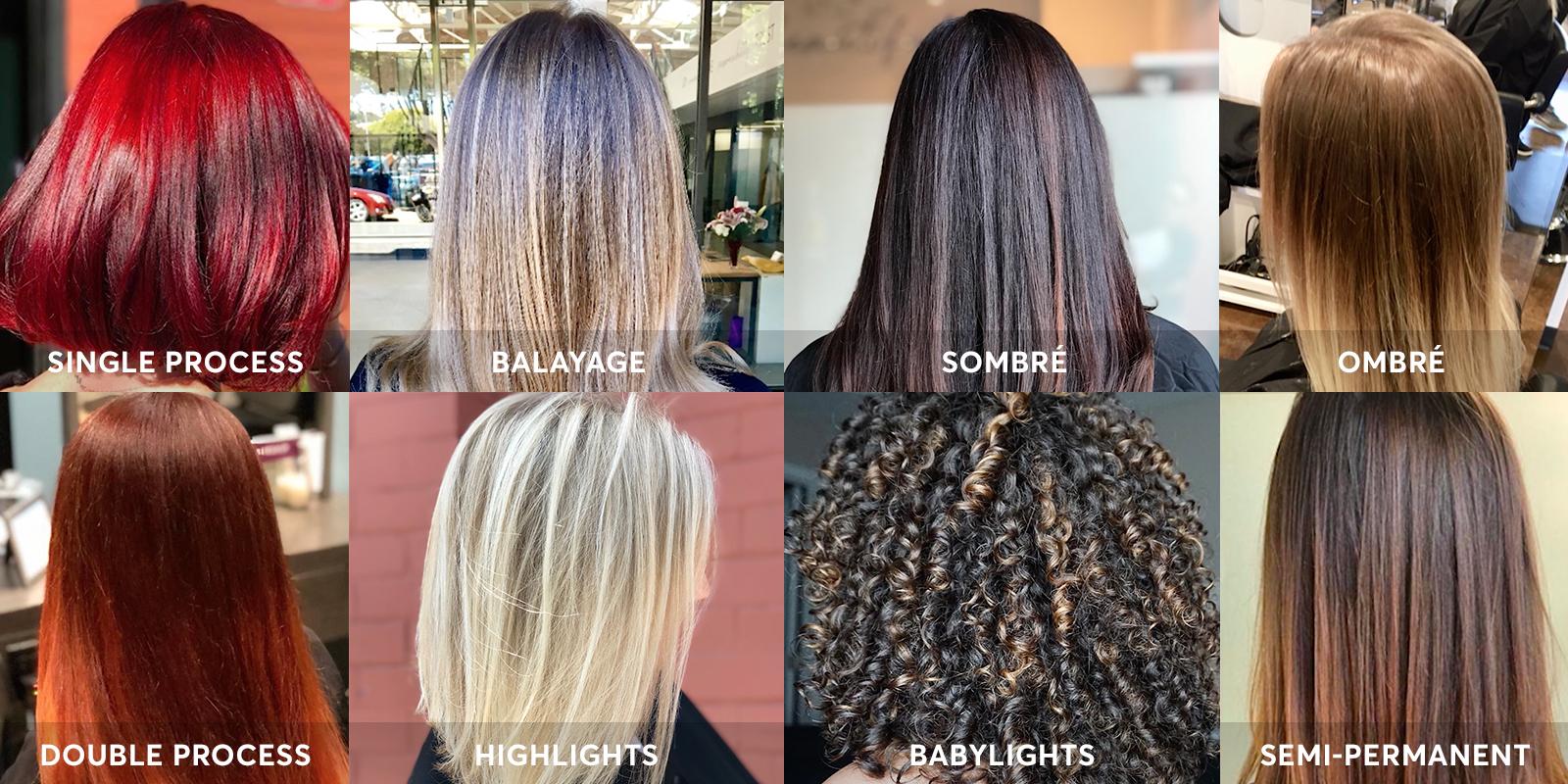Trending Now
Everything You Need to Know About Demi-Permanent Hair Color
How To Cover Gray Hair Around the Hairline?
How and When to Use Hair Gloss
Balayage vs. Highlights Differences: Which Is Best for You? | Madison Reed
What Causes Hair Loss? Reasons & Solutions, Explained
How to dye highlighted hair?
What's The Difference Between Semi-Permanent & Permanent Hair Color?
The Definitive Hair Color Dictionary
by Susannah Murdock {{"2018-06-27T19:48:00.000Z" | blogDate:'MMMM d, y'}}
Image by Madison Reed
You know what you want but you might not know how to ask for it. That’s no good, so we’ve compiled a list of all the terms you need to know to not only color like a pro, but sound like one, too. From A to V*, here is the definitive dictionary of hair color terms...
*There is no hair color term that starts with Z, unless you count zowie, which is how you feel with fresh, gorgeous hair color.
Definitions of Common Hair Color Terms
Now that you know how to talk the talk, it’s time to walk the walk. Or swagger the swagger. Because we believe that gorgeous hair color helps you feel on on-top-of-the-world unstoppable, and the only person who can define that is YOU.
- Activator: Also known as developer, this is an oxidizing agent added to hair color to “activate” the chemical process that deposits hair color into the hair shaft.
- Ammonia: Chemical formulated in most hair colors to open up the hair cuticle to allow the color to penetrate into the cortex of the hair. Unfortunately, ammonia may also damage hair, and due to its odor, it is necessary to use in a well-ventilated area.
- Ashy: Ash or ashy refers to the tone of hair color that is cool-based with blue, violet or natural/neutral pigments. Ashy tone does not contain any warm, red or golden hues.
- Babylights: Fine, delicate highlights that mimic the subtle, dimensional highlights seen on childrens’ hair.
- Balayage: A French word that literally means “sweep,” used to refer to a free-form highlighting technique that involves painting a lightener on to hair for soft, natural-looking highlights.
- Base color: The dominant color of hair, whether natural or colored, before any color or highlights are applied.
- Bleach: Strong lightening agent used to lighten or remove the color molecules inside the hair.
- Brassy: Refers to unwanted warm (orange and red) tones, usually in lightened or colored hair.
- Color Remover: Product that removes artificial color from hair (as opposed to bleach, which is used to remove both artificial and natural color from hair).
- Contributing Pigment: Also known as the undertone, this is the pigment with varying degrees of warmth that is exposed during a permanent color or lightening process.
- Coverage: Refers to the amount of gray that can be covered by hair color.
- Demi-Permanent Color: Color with little or no peroxide or ammonia, mixed with a low-volume developer to deposit color with little to no lightening power. Lasts for roughly 24 shampoos.
- Developer: Also known as activator, this is an oxidizing agent added to hair color to “activate” the chemical process that deposits the hair color into the hair shaft.
- Deposits: Refers to hair color molecules entering the hair cuticle to create a change in color or tone.
- Double Process Coloring: Coloring process typically used when lightening hair more that 2 levels. First the hair is lightened, usually with bleach, then pigment is added to create the desired shade.
- Foil technique: Highlighting technique using foils to keep color/lightener separate from the rest of hair.
- Full highlights: Highlights that involve the entire head, from the nape of the neck to the front of the head.
- Glaze/Gloss: Often used interchangeably, both are used to add shine and adjust the tone of hair color, and can either be semi- or demi-permanent.
- Highlights: Lightening sections of hair to add the illusion of depth and dimension.
- Level or the Level System: A universal system used by colorists and hair color manufacturers to standardize hair color charts. Level refers to how light or dark a hair color is—the lower the number, the darker the hair.
- Line of demarcation: A visible line that appears when hair grows out, separating colored hair from new growth.
- Lowlights: Depositing a darker color into separate strands of hair, creating the illusion of depth.
- Maximum Lift: The amount of lightening possible in different hair coloring techniques and formulas.
- New Growth or Re-growth: The uncolored new hair that grows in after the hair is colored.
- Ombré: The transition of hair color from darker roots to lighter ends. Can be brown to blonde, dark brown to light brown, deep auburn to red/good, etc.
- Partial Highlights: A highlights service to only one part of the head, typically placed around the face and throughout the crown for a framing effect.
- Patch Test: Test usually given in the crux of the elbow or behind the ear to test for sensitivity or allergies.
- Permanent Hair Color: Hair color mixed with a developer/activator that contains an oxidizing agent that changes the hair structure to deposit color. Can be used to lighten or darken or change the tone of the hair.
- Pigment: Melanin protein bonds found in the cortex (the middle layer of the hair) that gives hair its color.
- Resistant: Also known as resistant hair, this refers to hair that resists penetration of color and is an indication of the condition of the outer layer of the hair.
- Roots: The new outgrowth of hair from the scalp, noticeable when coloring hair or if coloring gray hair.
- Semi-Permanent Color: Hair color that does not require a developer/activator and only partially penetrates the cuticle and is gradually washed out after each shampoo.
- Single-process Hair Color: Refers to coloring that colors and or lightens hair in one step.
- Sombré: A softer version of ombré hair, with an even more subtle gradation.
- Sun-kissed: Highlights created by the sun, or subtle highlights intended to mimic those created by the sun.
- Technique: Form of hair color application, such as balayage, foil, or single-process.
- Temporary Color: Non-permanent color that doesn’t penetrate the cuticle but sits in the outer layers of the hair strand, allowing it to be removed by shampoo.
- Tone: Refers to the “finish” of a hair color, indicated by the amount of warmth (orange/red) or coolness (blue/ash) of the hair.
- Toners: Product applied to colored or lightened hair to neutralize unwanted tones, or refresh and enhance existing color.
- Touch Up: The application of hair color to re-growth, also called a root touch up.
- Virgin Hair: Hair that has never been color treated.











